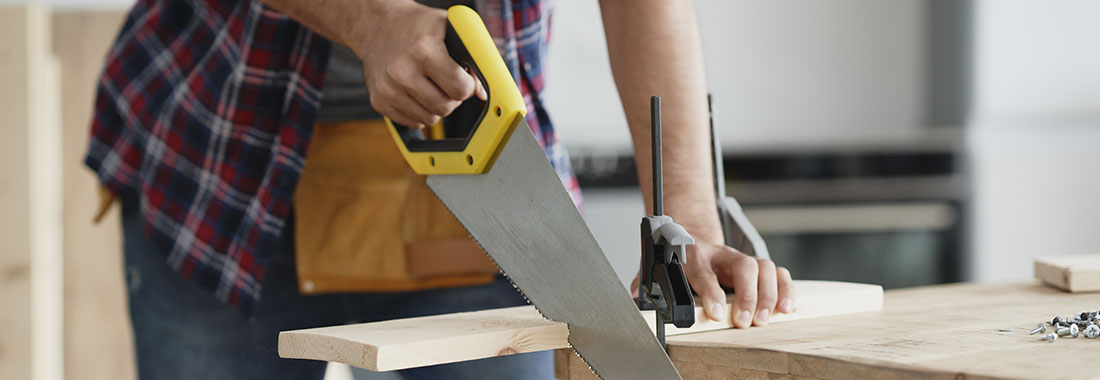

Hand saws have come a long way since the first primitive versions thousands of years ago. There are now so many options available that choosing the right saw for the job isn’t always easy. In this introductory guide, we’ll be taking a look as some of the most popular types of saw on the market, along with their various applications and potential limitations.
Hand saw anatomy
Most hand saws share the same basic design, comprising a blade, a handle and the fittings needed to attach the two components together. Blades and handles differ significantly from one type of saw to the next, but the basic composition is usually the same.
The bottom edge of a saw blade (the sharp part) is referred to as the front, while the opposite side is known as the back. The heel of the blade is the part closest to the handle, while the toe is the furthest part of the blade.
Saws can be used to cut into or through a wide variety of materials, typically using teeth that are bent alternately (one right, one left etc) at a slight angle to the main body of the blade. This is to ensure that the cutting edge is slightly larger than the diameter of the blade, in order to prevent it from getting stuck when cutting into materials.
Different types of hand saws
Hand saws are available in a wide range of shapes, sizes and configurations, for many different purposes. The vast majority of everyday saws you’ll come across for most routine purposes are:
Standard hand saws
The standard hand saw may be the most instantly recognisable tool of them all, which is designed primarily for cutting panel materials and boards. Manufacturers usually focus on a lightweight design for easier handling, along with a large and sometimes ergonomic handle for a comfortable grip. The blade teeth of a hand saw vary enormously in shape, size and positioning, in order to deal with a variety of materials as efficiently as possible.
Hacksaws
Hacksaws are another extremely common and versatile variation of the hand saw, which was originally designed for cutting through metal. The defining characteristic of a hacksaw is a C-shaped frame that holds a blade under tension. A hacksaw features teeth in a variety of shapes, sizes and positions to suit different types of material.
A saw with a hacksaw shape but designed for cutting through wood is usually referred to as a bow saw.
Tenon saws
As the name suggests, tenon saws are designed primarily with cutting tenons. They are a significantly smaller than a conventional hand saw and also have much thinner blades. These are strengthened to ensure the blades do not buckle while in use.
Flush cutting saws
A flush cutting saw is a useful tool for trimming protrusions, in order to create a flush and flawless finish. Flush cutting saws feature a handle positioned at a slight angle, along with a specially designed blade that will not scratch or damage the surrounding area while in use.
How to use hand saws
Let’s take a look at a few tips and guidelines from the experts on how to get the best out of your hand saw:
- Rather than using a pen or pencil to draw a guideline on the material, it’s far better to score a line into the surface to create a physical groove. This makes it much easier to create an accurate cut, without straying from the line.
- When gripping the saw, try holding the handle with your middle, ring and little finger, while pointing your thumb and index finger in the direction of the blade. This can be surprisingly effective in improving the accuracy and straightness of the cut.
- Your standing position should be such that your line of sight follows the direction of the blade directly down the back of the saw. Standing to either side can adversely affect the straightness of the cut.
- Always be sure to check whether the saw you are using performs the cut during the forward or backward stroke. This will ensure you apply the right amount of pressure at the right time, improving the quality of the cut and avoiding damage to your saw.
- Take your time, using long and steady strokes to cut through the material. Rushing with shorter and more aggressive strokes increases the risk of an unsatisfactory result.



